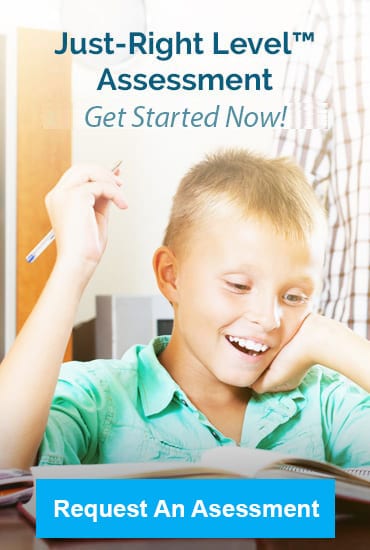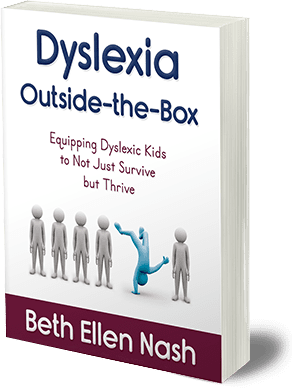Teaching the Traits of Good Writing and the Writing Process Helps with Writing Problems

Writing is made up of many small skills that together create “chunks” of skill sets. Like an orchestra, these skill sets must work together in concert to create a piece of work that feels harmonious, unified, and whole. If any section of the orchestra (or single instrument) is out of tune or off beat, the whole performance suffers. In the same way, any unmastered skill in writing causes the entire process to suffer. As beautiful, creative, spontaneous, or imaginative as music and writing can be, there is a skill-based side that requires practice and dedication. In music, if a trumpet player cannot control their breath well, the sound that comes out is squeaky and shrill. A drummer must practice keeping an even tempo or they will mislead an entire band. Writing is the same way. Any skill that is not mastered is like that shrill note, that skip in the rhythm, or simply that lack of spark that puts the audience to sleep.
Writing is hard, and struggling students need support as they practice each individual skill and slowly put them all together to effectively help with writing problems. With support they will discover the feeling of having created a masterpiece, with each skill playing with the rest and no one skill more noticeable than the other. All is in harmony and the work flows out from the skills in a beautiful symphony.
What Is Good Writing? The 6+1 Traits® of Writing
In the 1980s a model called “The Six Traits of Writing” was developed by a large group of teachers nationwide. The goals of this writing model were to:
- Create a list of common characteristics that appear in “good writing”
- Create a way to teach and evaluate the complex process of writing
- Create a shared vocabulary about writing
- Create and foster feedback between writers and teachers that celebrates the ever-developing process of writing, not just the products of writing
This model is widely adopted in US schools, and anyone working with developing writers should have an understanding of it. This source is suggested for further reading: www.educationnorthwest.org/traits/about-61-trait-writing. Many writing problems can be addressed by explicitly teaching and practicing these traits of good writing.
According to this model there are six traits that appear in all good writing. They are:
- Ideas: the main message
- Organization: the internal structure of the piece
- Word Choice: the vocabulary a writer chooses to convey meaning
- Sentence Fluency: the rhythm and flow of the language
- Voice: the personal tone and flavor of the author’s message
- Conventions: the mechanical correctness – punctuation, capitalization, spelling, usage, and grammar1
And Education Northwest’s 6+1 Traits writing model adds one more: - Presentation (the “+ 1” Trait): how the writing actually looks and/or sounds. Formatting can vary depending on the media being used for presentation.
The Writing Process
Breaking writing down into a step-by-step process is an important part of helping students with writing problems that makes it manageable. Each stage in the writing process takes the writer another step from idea to polished piece. This is the same process that professional writers use. No professional writer expects the first draft to be great. They know that many rounds of revising and editing help them turn their initial start into the final form. Many writing problems are due to unrealistic expectations of how the writing process should work. According to Write Source, there are five stages to the writing process:
- Prewriting
- Brainstorm using mind maps, lists, etc.
- Select your topic: What is the subject of my writing?
- Determine your audience: Who will read the writing? What are their needs, biases, and prior knowledge?
- Determine your purpose: Why am I writing? What is my goal?
- Select your writing type: What type of writing is appropriate for this piece?
- Descriptive: a detailed picture of a person, place, thing, or event
- Narrative: relates an event, experience, or story
- Persuasive: persuades the reader to agree with the writer about something
- Expository: explains by presenting steps, causes, or kinds of something
- Understand the list of criteria against which you will measure your output.
- Gather information.
What do I know? What don’t I know?
Read and find out more about the topic and the audience.
Take notes (note the sources in your notes so you can provide proper citations).
- Organize your thoughts into an overall plan.
- Drafting
- Use the prewriting plan as a guide, but add and adapt as appropriate as you write.
- Concentrate on getting the ideas down on paper when writing the first draft. Don’t try to make it perfect. That comes later.
- Use dictation or speech-to-text if you wish help in getting your thoughts onto the page. Google Documents has a free tool called Voice Typing that makes this easy.
- Explain the main message in a way that makes sense.
- Group the supporting details into a logical sequence.
- Find and insert supporting evidence, details, etc.
- Compose the introduction, body, and conclusion for each paragraph and for the piece as a whole.
- Cite sources as you draft (but you can format them in the editing stage).
- Revising
- If the rough draft was not created on a computer, it is well worth inputting the text in a word processing program such as Google Documents or Microsoft Word before beginning the multi-stage revision process. This will make revising much easier and more effective.
- Review each draft after setting it aside for a while so you can see it with fresh eyes.
- Work through the writing piece several times. Each time focus on one of the following traits of good writing:
Ideas: Have you communicated the main message clearly? Effective writing has a clear message, purpose, and focus. Have you used plenty of specific ideas and details to support your main message?
Organization: Does the writing follow a coherent plan? Is there a weaving together of ideas? Does the structure of the piece make sense? Do all the ideas in each paragraph support the main point of the paragraph? Is there a clear beginning, middle, and end to each paragraph and to the piece as a whole? Have you used strong transition words and phrases appropriate to the type of writing to connect ideas, such as “Next,” “For this reason,” “For example,” and “On the other hand”?
Word Choice: Are the words chosen the best words to convey meaning? Does your choice of words convey a formal or more personal and informal tone as appropriate to the piece? Are the nouns and verbs specific? Are the adjectives and adverbs clear and colorful? Does the word choice allow for clear yet concise writing? Is a word overused? If so, look for more powerful synonyms to vary the word choice. Make sure the words you choose are words your audience will understand.
Sentence Fluency: Are the sentences different in length, sentence type, opening words, and complexity, providing variety? Does the rhythm and flow of the language work for this piece? Do the sentences read smoothly and flow from one to the next? Listen as someone else reads your piece aloud. Do any of the sentences cause the reader to stumble or sound awkward?
Voice: Are the tone and flavor appropriate to the piece and audience? Are they consistent? Have you demonstrated your unique viewpoints on the topic? Does your writing show your genuine interest in the topic? Do you come across as knowledgeable and confident about your topic? Do you appropriately share your honest feelings and thoughts about the topic?
- Share working drafts for feedback. Does what you wrote communicate what you want to say to your intended audience?
- Editing
- This is the stage for proofreading for the conventions of good writing: grammar, usage, pronoun reference, consistency in number and person, and mechanics (spelling, capitalization, punctuation, paragraphing, and proper formatting of citations).
- Measure the final product against a given criteria or rubric.
- Publishing
- Make sure the presentation of the final piece is neat and follows guidelines for margins, spacing, and indenting.
- Share the finished writing with others.
- Use appropriate modes (print, multimedia, etc.) for the audience and purpose.
Obstacle for Writers: Taking Risks
For all writers, the process is at some point daunting. When we don’t know what to do next, writing becomes challenging and feels beyond what we can do. We call this “writer’s block,” but a more accurate name would be “writer’s torture”!
Students need to be taught that it is okay, and even necessary, to take small risks in writing that require them to step out of their comfort zone. One key to helping students with writing problems is to do this carefully, consistently, and in a way that promotes a successful experience. If a student can learn to take writing risks no matter what the challenge, they will become a competent writer. Writing well is like performing well: it will happen if you take the time to work on fundamentals as well as application.
Unblocking the Block
To apply skills successfully, developing writers are encouraged to take risks that are hard for their current learning level. The only reason writing seems difficult or impossible for many learning-challenged kids is that no adult has yet broken down learning the skills into manageable steps at just the right level of challenge for them in each skill strand which is essential to effectively help them overcome writing problems. There is no reason a dyslexic or dysgraphic student can’t learn to become a good writer if you scaffold the process and provide supports as needed.
Failure to build component skills prior to combining them into a finished product yields unsuccessful results. Unrealistic expectations lead to more writing problems. For example, neither teacher nor student should expect a first draft to be the final product. Such failures precondition the student to avoid risks. Wading into the writing process one step at a time is much safer than trying to dive in all at once. The student learns to think, “Yes, there is a little risk, but I can step back and take a step in a different direction (revise) when I need to. I might stub my toe, but I won’t break my neck. It will take longer, but I will eventually reach my goal of effective communication safely.” Helping our students become willing to take these small risks as we provide the scaffolds for success is a big key to helping them overcome their writing problems.



